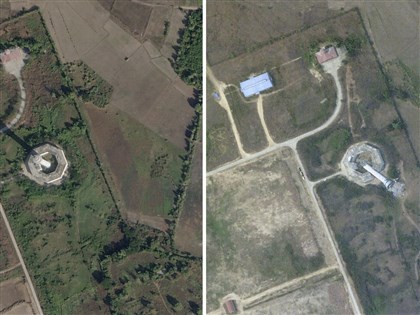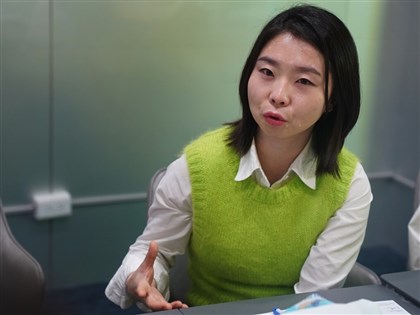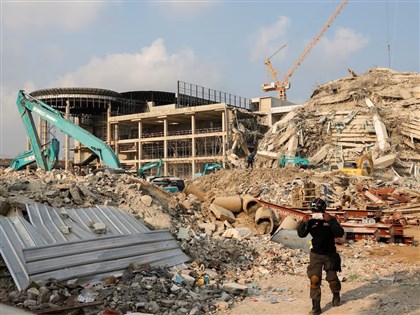義大利版畫藝術家:皮拉奈奇
撰文及考題設計/British Council 英協教育中心 Brian Welter 中譯/陳怡君 (中央社編譯)
A small, curving palm tree grows out of still water. Enormous chunks of fallen buildings, mostly columns which once held up heavy structures, lay in pieces on their side, sticking out of the water. In the background, a few people are standing around, fishing, or talking. Behind the people are enormous Roman ruins, several stories high, only half standing and mostly roofless. Bushes and other plants grow out of the walls. We are looking at the artwork of Giovanni Battista Piranesi, who lived between 1720 and 1778.
一株小而彎曲的棕櫚樹,自靜止的水面中長出, 圍繞周圍的是巨大的倒塌建築,大多是曾用以支撐厚重建築的梁柱,散落一旁矗立於水塘。背景有一群人圍繞,抑或釣魚、交談。在人群背後則是巨大、數層樓高的羅馬遺跡,建築本體大多只剩一半或是少了屋頂本體。灌木叢與其他植物則自牆壁夾縫中長出。我們正欣賞著生於1720年、逝於1778年的義大利版畫藝術家─皮拉奈奇的藝術畫作。
Born in Venice, the young Piranesi spent time working as an architect and artist in his native city. Always strong-tempered, he worked first with his uncle until they had a disagreement. In the eighteenth-century, artists and architects learned by doing. They didn’t go to university, but worked under the direction of a skilled master. In his early career, Piranesi worked under many masters because of his varied interests and his difficult personality.
出生於威尼斯,年輕時的皮拉奈奇於家鄉發跡, 從事建築與藝術的工作。擁有強硬脾氣的他,首先跟著叔叔學習,直至意見分歧。在18世紀,建築師和藝術家總是從實際創作中汲取經驗。他們沒上大學,而是在技藝高超的大師指導下工作。在早期事業中,因多方興趣以及執著的脾氣,皮拉奈奇輾轉於多位不同的大師門下。
When he went to Rome for the first time in his early twenties, he worked continuously to better understand the city and portray its ancient buildings, walls, statues, and fountains. He spent day after day looking throughout the city for ancient artifacts, such as lost coins or crumbling ruins. He studied the ancient city’s history, reading Latin and looking at old building plans. He applied what he knew about architecture to the old buildings, imagining how they must have looked in their best days and how the ancient Romans had designed and built them.
20歲出頭首次前往羅馬發展時,皮拉奈奇持續努力地去理解這座城市並試著描繪它古老的建築、雕像與噴泉。他日以繼夜地搜尋這座城市的古早「缺陷」,像是遺失的錢幣、剝落的廢墟等。他研讀這座古城的歷史,研究拉丁文與分析老房屋的藍圖。他將建築知識應用在這些老房子上,想像這些建築在當年輝煌的年代究竟是什麼模樣,以及古羅馬人是如何設計與建造它們。
In particular, Piranesi became famous in his own day for his etchings and engravings. To etch a picture, we use acid to make marks, such as lines or the shape of buildings, on a metal plate. To engrave a picture, we cut into a metal plate.
皮拉奈奇以蝕刻與雕刻版畫逐漸打響名號。要完成一件蝕刻作品,通常用酸性溶液標記於金屬盤上,用來做劃線、建築塑形的註記;雕刻版畫, 則是直接在金屬盤上刻劃。
Much of Piranesi artwork was large, depicting wide views of neighborhoods: buildings and ruins, wide streets and public spaces, and the trees and hills of Rome. This style is called veduta. These paintings showed the large areas of a city in great detail. There were many veduta artists in Rome at this time. Tourists from northern Europe would buy this artwork to take back with them to their own country.
皮拉奈奇大多數的作品是大型的,描繪鄰近周遭建築、廢墟的廣角街景、寬廣的街廓與公共空間、路樹以及羅馬的山丘。這種風格稱作「景觀畫」;這些畫作展露驚人的細節於大型的城市街景畫中。當時羅馬有眾多景觀畫風格的畫家。來自北歐的觀光客則將畫作買回國內。
Despite his love for the city of two thousand years ago, Piranesi often portrayed the remains of ancient Rome as he saw them in his day, surrounded by skulls and other bones, broken lanterns, books and scattered paper. There was a mixture of the ancient and the more modern in these scenes. Much of his artwork portrayed eighteenth-century Rome much better than it did the ancient city.
儘管他熱愛的是兩千年前的城市樣貌,皮拉奈奇常用他的觀察去描繪古羅馬的遺跡,例如圍繞著的骷髏頭、骨骸、破損的燈籠、書籍與散落的紙張等。在這些情境中常混雜著古代與現代的元素。許多他描繪18世紀的羅馬作品遠比他描繪古城來得傑出。
This must have troubled Piranesi, because one of his key goals was to show ancient Rome not in separate scenes, but in its unity. He believed that Rome’s greatness was in the spirit of the ancient city as a whole. He believed that the Rome of his day had lost this greatness, but could recover it. 這想必困擾著皮拉奈奇,因為他主要的目標之一是完整地、而非片段式的呈現古代羅馬。他深信羅馬的偉大必須包含古城的精神。他相信他那時的羅馬已經失去它的雄偉,但是可以回復的。
Yet eighteenth-century Rome was a mixture of the many architectural and artistic styles that had come and gone in the centuries since the end of antiquity. An ancient building would be next to a church from his own century, with a three-hundred year-old structure across the street. Piranesi disliked this chaos, and worked hard so that the Rome of his day could once again have a unified spirit.
然而,18世紀的羅馬歷經許多自古典時代結束以降建築與藝術的風格更迭。一座古代建築旁也許就矗立著當代風格的教堂,跨過對街也許又是另一棟300年歷史的建築。皮拉奈奇不喜歡混亂,於是他致力於恢復當年的羅馬街景一致風格。
Despite his love for Rome, the great artist traveled a lot. Once he had to go back to Venice because of money troubles. The Italy of his day was not a united country where Italians could live wherever they wanted. He first went to Rome to work for the representative of the government of Venice. When that job ended, he had to leave.
儘管熱愛羅馬,這位偉大的藝術家仍常四處遷徙,一次因財務狀況而必須返回威尼斯。當時的義大利並非統一的國家,義大利人並無法自由選擇居住地區。他第一次是以威尼斯政府的代表身分前往羅馬,因此任務結束,他也必須離開。
When he was able to return a few years later, he took up his art and architectural work again. In this second Roman period of his life, he became famous. Occupying a large building near the main street in the city at the time, his place became a center for trading ancient coins and other small things, buying and selling veduta paintings, and studying ancient art and architecture. Until his last day, Piranesi continued to study architectural plans of ancient buildings and read other old documents to better understand the ancient city. 數年後有機會重返羅馬,他於是重拾建築與藝術事業。第二度的羅馬生涯中,他逐漸享有名聲。他的住所是矗立於市中心主要大街上的宏偉建築,亦成為古代錢幣與各種玩物及景觀畫派畫作的交易或交換處,也是古典藝術與建築的研究中心。直至人生的最後一天,皮拉奈奇依舊持續鑽研古老的建築藍圖以及其他古代文稿,以求更了解這座古城。
His son Francesco followed this interest, and continued this work after his father’s death. Because of political instability and the resulting violence, Francesco had to leave for Paris, where he took much of his father’s work with him.
他的兒子佛蘭契斯柯繼承衣缽,在皮拉奈奇過世後持續他的志業。因為政治的不穩定以及暴戾風氣,佛蘭契斯柯必須帶著父親的作品前往巴黎發展。
Piranesi’s work today is considered a great example of eighteenth-century art and that period’s love for ancient Rome.
皮拉奈奇的作品直至今日仍被視為18世紀藝術的偉大範例,展現當代對古羅馬的思古幽情。
本網站之文字、圖片及影音,非經授權,不得轉載、公開播送或公開傳輸及利用。





















